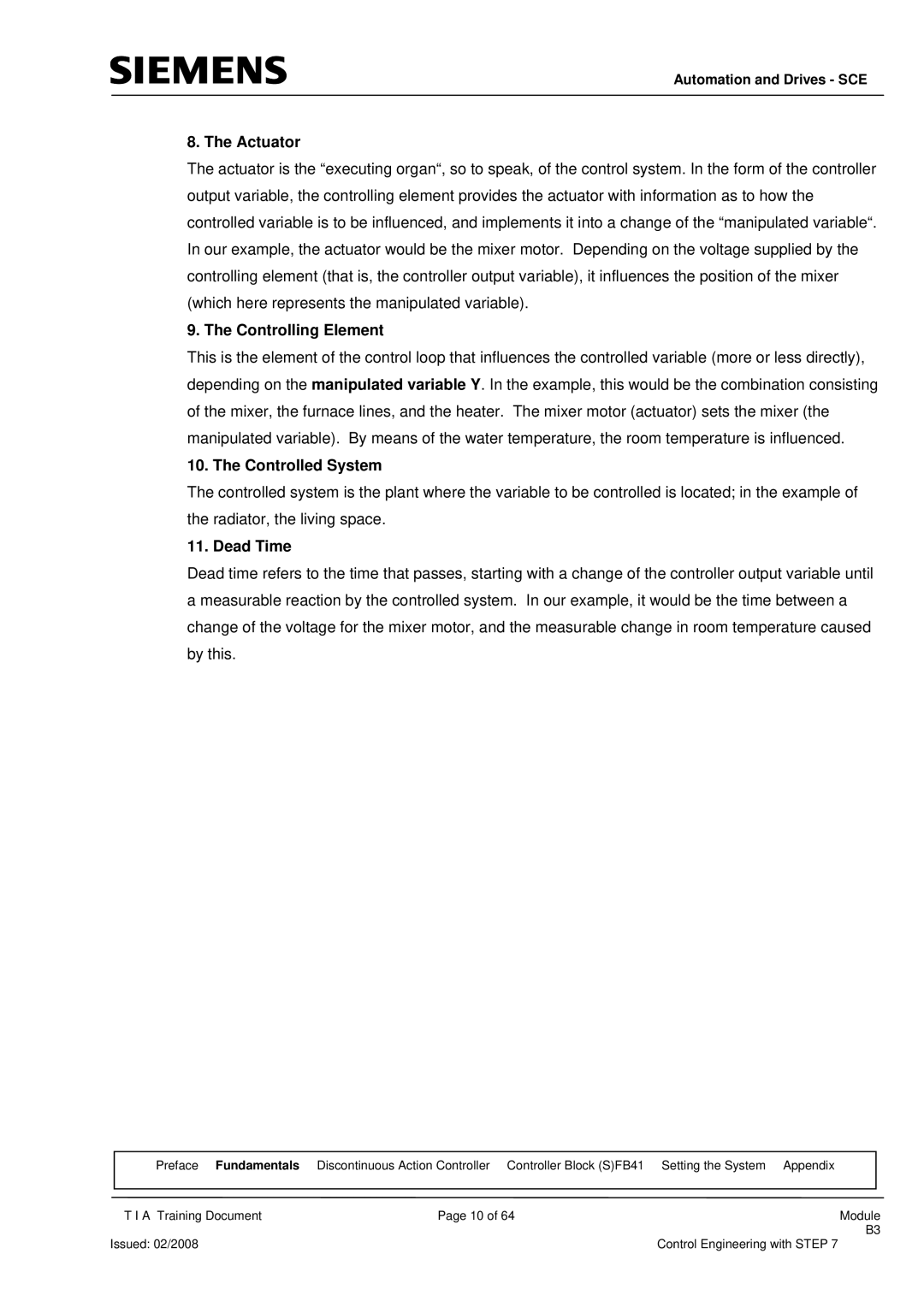
Automation and Drives - SCE
8. The Actuator
The actuator is the “executing organ“, so to speak, of the control system. In the form of the controller output variable, the controlling element provides the actuator with information as to how the controlled variable is to be influenced, and implements it into a change of the “manipulated variable“. In our example, the actuator would be the mixer motor. Depending on the voltage supplied by the controlling element (that is, the controller output variable), it influences the position of the mixer (which here represents the manipulated variable).
9. The Controlling Element
This is the element of the control loop that influences the controlled variable (more or less directly), depending on the manipulated variable Y. In the example, this would be the combination consisting of the mixer, the furnace lines, and the heater. The mixer motor (actuator) sets the mixer (the manipulated variable). By means of the water temperature, the room temperature is influenced.
10. The Controlled System
The controlled system is the plant where the variable to be controlled is located; in the example of the radiator, the living space.
11. Dead Time
Dead time refers to the time that passes, starting with a change of the controller output variable until a measurable reaction by the controlled system. In our example, it would be the time between a change of the voltage for the mixer motor, and the measurable change in room temperature caused by this.
| Preface | Fundamentals | Discontinuous Action Controller Controller Block (S)FB41 | Setting the System Appendix |
|
|
|
|
|
| |
| T I A Training Document | Page 10 of 64 | Module | ||
|
|
|
| B3 | |
Issued: 02/2008 |
|
| Control Engineering with STEP 7 | ||
